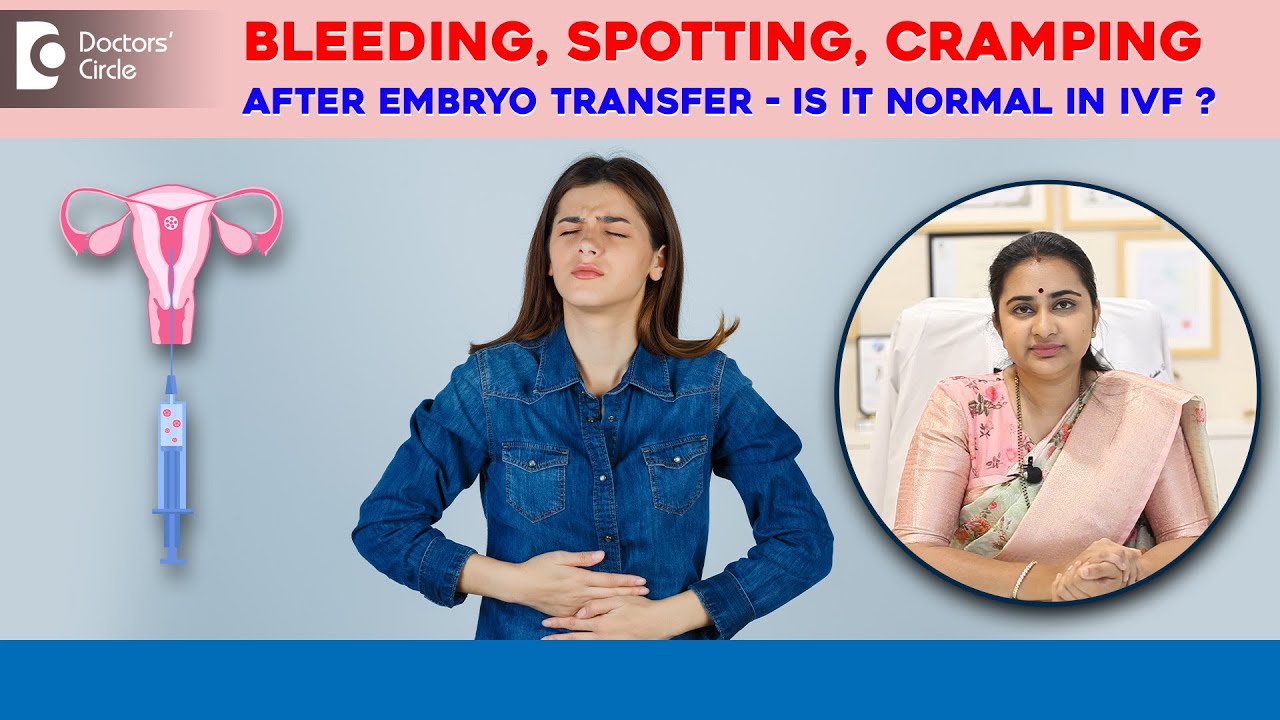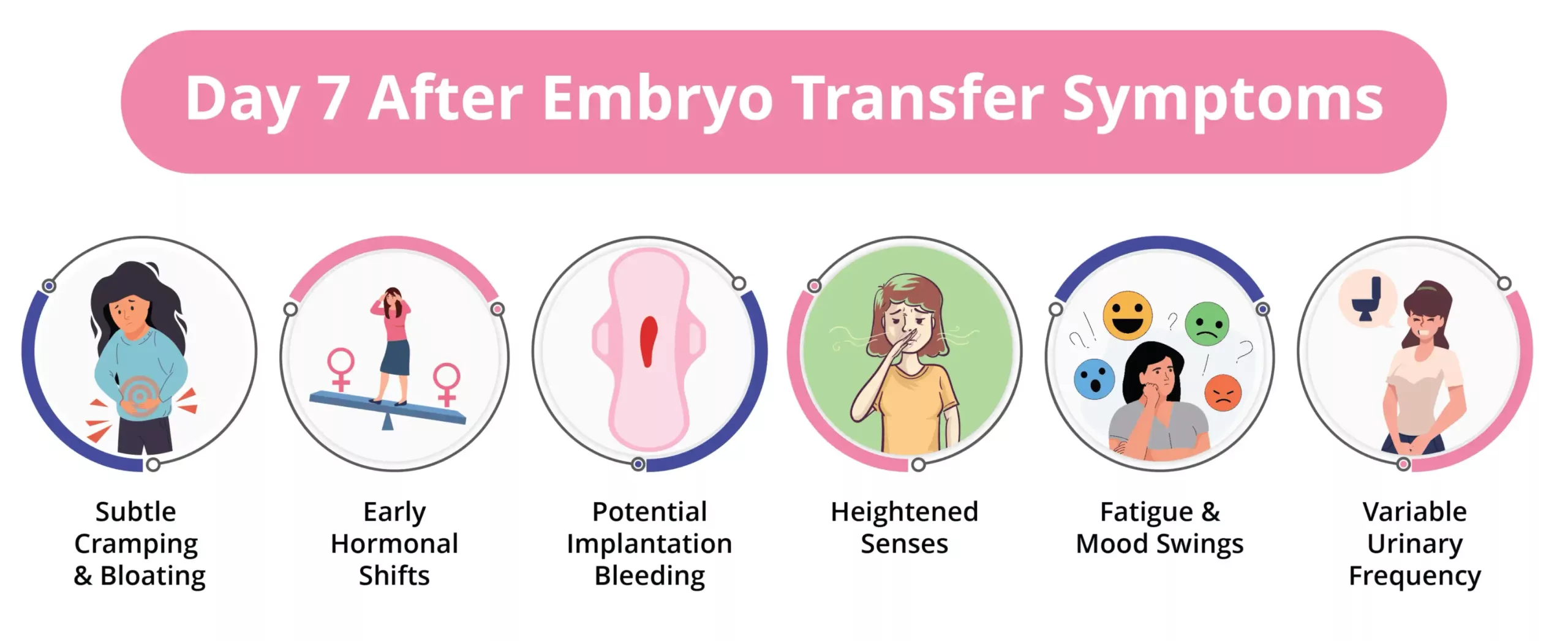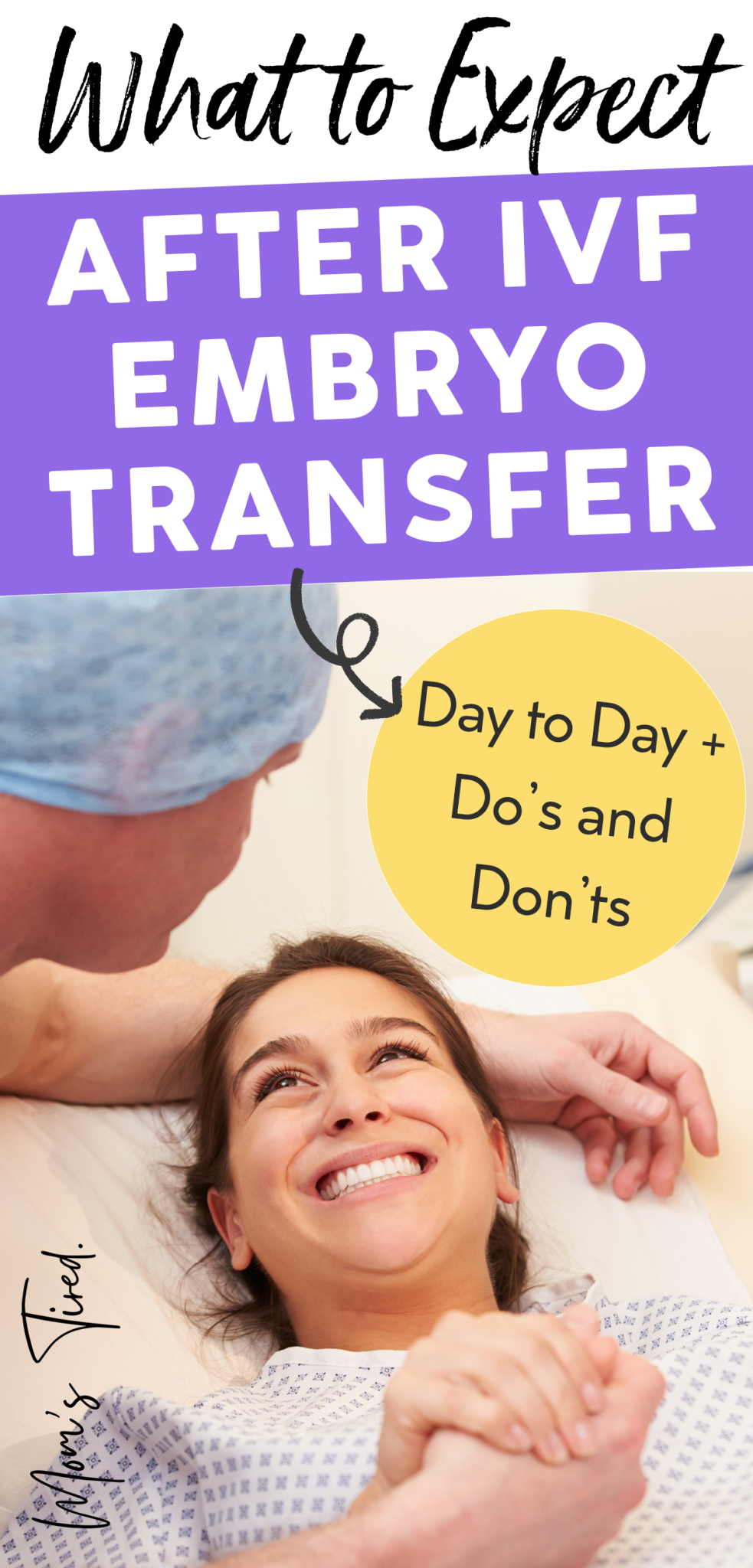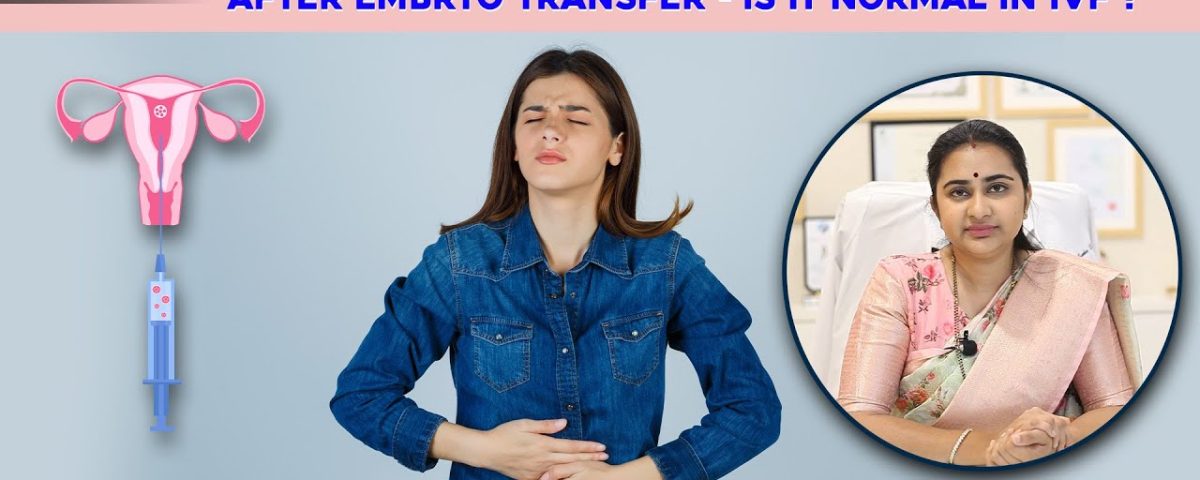
Boston IVF Providence: Your Guide to Fertility, Hope, and Hidden Gems
April 27, 2025
Everything You Need to Know About Buffalo Infertility and IVF
April 27, 2025Cramping After IVF Transfer: What’s Normal, What’s Not, and How to Cope
Hey there! If you’ve just gone through an IVF embryo transfer, you’re probably riding a rollercoaster of emotions—hope, excitement, maybe a little anxiety. And if you’re feeling some cramping after IVF transfer, you might be wondering, “Is this normal? Does it mean something good or bad?” Don’t worry—you’re not alone. Tons of people going through IVF have the same questions, and I’m here to break it all down for you in a way that’s easy to understand, super relatable, and packed with stuff you won’t find everywhere else.
Cramping after an embryo transfer can feel like a mystery, but it doesn’t have to be. In this deep dive, we’ll explore why it happens, what it might mean, when to chill out or call your doctor, and—here’s the fun part—some quirky tips and real-life insights from folks who’ve been there. Plus, I’ll sprinkle in the latest research and practical advice to help you feel more in control during this wild waiting game called the two-week wait. Let’s get started!

Why Does Cramping Happen After IVF Transfer?
So, you’ve had your embryo transfer, and now your belly’s doing a little dance. Why does this happen? Cramping after IVF transfer is actually pretty common, and there are a few reasons your body might be sending you these signals.
The Procedure Itself: A Tiny Tweak to Your Uterus
When the doctor places that precious embryo into your uterus, they use a thin tube called a catheter. It’s a quick process—usually just a few minutes—but it can irritate your cervix or uterus a bit. Think of it like when you accidentally bump your elbow: it’s not a big deal, but you feel it for a sec. That mild irritation can lead to light cramping right after the transfer, often fading within a day or two.
- What it feels like: A gentle tugging or pinching, kind of like period cramps but softer.
- How long it lasts: Usually 24-48 hours, though some say it lingers a little longer.
Hormones Are Running the Show
IVF involves a lot of hormones—progesterone, estrogen, and sometimes others—to get your body ready for pregnancy. These hormones can make your uterus more sensitive, causing it to contract slightly. It’s like your uterus is flexing its muscles, getting ready for the big job ahead!
- Fun fact: Progesterone, which you might be taking as a shot or suppository, is famous for causing bloating and cramping. It’s like the behind-the-scenes MVP of IVF.
Implantation: The Embryo Settling In
Here’s where things get exciting. Around 6-12 days after the transfer, the embryo might start burrowing into your uterine lining—a process called implantation. Some people feel this as mild cramping or twinges. It’s not a guarantee of pregnancy, but it’s one of those “maybe, just maybe” moments that keep you on your toes.
- Latest research: A 2023 study from the Journal of Assisted Reproduction found that about 30% of women reported implantation cramping between days 6-10 post-transfer, often described as “sharp little pokes.”
Stress and Your Body’s Secret Connection
Okay, let’s be real: IVF is stressful. You’re waiting to see if this little embryo sticks, and that anxiety can sneak into your body. Stress can tighten your muscles—including your pelvic ones—leading to extra cramping. It’s like your body’s saying, “Hey, I’m tense too!”
- Quick tip: Try a cozy blanket and your favorite show. Distraction can work wonders.
Is Cramping After IVF Transfer a Good Sign or a Bad Sign?
This is the million-dollar question, right? You’re lying there, feeling a twinge, and wondering, “Does this mean I’m pregnant—or that it didn’t work?” Let’s unpack this with some honesty and a sprinkle of science.
It Could Be a Positive Sign
Mild cramping can happen when the embryo implants, and that’s what we’re all rooting for! Some women who’ve gone through IVF swear they “knew” they were pregnant because of those little cramps. Take Sarah, a 32-year-old mom from Texas, who shared on an IVF forum: “I felt these weird pinches around day 7, and two weeks later, I got my positive test!”
- What to watch for: Light, on-and-off cramps that don’t get worse, sometimes paired with a bit of spotting (think pink or brown, not bright red).
It Might Just Be Your Body Adjusting
Here’s the flip side: cramping doesn’t always mean implantation. It could be your uterus reacting to the transfer, the hormones, or even that extra cup of coffee you had to stay awake. Dr. Emily Carter, a fertility specialist in California, puts it this way: “Cramping is like a text message from your body—it’s telling you something’s happening, but it’s not always clear what.”
When It’s a Red Flag
Severe cramping—think can’t-get-out-of-bed pain—or cramping with heavy bleeding could signal trouble, like an ectopic pregnancy or miscarriage. But don’t panic! This is rare. Only about 1-2% of IVF pregnancies are ectopic, according to the American Society for Reproductive Medicine (ASRM).
- ✔️ Normal: Mild, period-like cramps that come and go.
- ❌ Not normal: Sharp, constant pain or soaking a pad in an hour.
Day-by-Day: What to Expect After Your Embryo Transfer
The two-week wait (TWW) is like the longest movie ever, and cramping can pop up at different scenes. Here’s a day-by-day guide to what’s normal, based on real experiences and expert insights.
Days 1-3: Right After the Transfer
- What’s happening: Your uterus might be saying, “Hey, something just happened here!” The catheter can cause light cramping or a bloated feeling.
- Real talk: Jenna, a 28-year-old from Ohio, said, “I felt crampy the first night, like I ate too many tacos. It went away by day 2.”
- Tip: Rest, but don’t overdo the bed rest—light walking can help.
Days 4-6: The Quiet Before the Storm
- What’s happening: The embryo is floating around, finding its spot. Cramping might ease up, or you might feel nothing at all.
- Science bit: The embryo usually implants between days 6-10, so these quieter days are prep time.
- Tip: Sip herbal tea (check with your doc first) to stay calm.
Days 7-10: Implantation Window
- What’s happening: If implantation happens, you might feel twinges or mild cramps. Some notice light spotting too.
- Cool stat: A 2024 survey by Fertility and Sterility found 25% of successful IVF patients felt cramping around day 8.
- Tip: Keep a journal—tracking symptoms can feel empowering.
Days 11-14: Almost Test Time
- What’s happening: Cramping might pick up if you’re pregnant (hormones kicking in) or signal your period if not.
- Heads-up: Progesterone can mimic pregnancy symptoms, so don’t overthink it yet.
- Tip: Distract yourself with a hobby—knitting, anyone?
What Does the Research Say About Cramping?
Let’s nerd out for a minute. Scientists have been digging into cramping after IVF to figure out what’s what. Here’s the scoop from the latest studies:
- Implantation link: A 2022 study in Human Reproduction showed that women with mild cramping 7-10 days post-transfer were slightly more likely to have a positive pregnancy test (38% vs. 32% without cramps). But it’s not a sure thing—other factors like embryo quality matter more.
- Hormone effects: Progesterone, a key player in IVF, can cause uterine contractions. Research from the ASRM in 2023 found that 60% of women on progesterone supplements reported some cramping during the TWW.
- Stress factor: A small 2024 study in Psychosomatic Medicine linked higher stress levels to increased pelvic discomfort in IVF patients. So, keeping calm might actually help your body chill out too.
Takeaway? Cramping’s common, but it’s not a crystal ball. It’s just one piece of the puzzle.
When Should You Worry About Cramping?
Okay, let’s get practical. Most cramping is no biggie, but there are times to pick up the phone and call your clinic. Here’s how to tell the difference.
Green Light: Keep Calm and Carry On
- Mild cramps that feel like your period’s coming.
- Cramping that stops after a day or two.
- Light spotting (pink or brown) that doesn’t turn into a flow.
Yellow Light: Check In With Your Doc
- Cramping that’s stronger than usual but not unbearable.
- Spotting that’s more than a few drops but not heavy.
- Feeling super bloated or uncomfortable for days.
Red Light: Call ASAP
- Severe pain that doubles you over.
- Heavy bleeding (like a period or more).
- Fever, nausea, or dizziness with cramps.
Dr. Lisa Nguyen, a reproductive endocrinologist in New York, says, “If your gut tells you something’s off, trust it. We’d rather you call and it’s nothing than wait and miss something important.”
How to Deal With Cramping: Tips From Real People and Pros
Cramping can be annoying, but you don’t have to just grit your teeth and bear it. Here are some tried-and-true ways to ease the discomfort—plus a few quirky ideas you won’t find in every article!
Step-by-Step Relief Guide
- Warm It Up: Grab a heating pad or a warm (not hot!) water bottle and place it on your lower belly for 15-20 minutes. It’s like a hug for your uterus.
- Hydrate Like a Champ: Drink 8-10 glasses of water a day. It helps with bloating, which can make cramps feel worse.
- Rest Smart: Lie down with your feet up for a bit, but skip the all-day bed rest—it’s not needed and might make you stiff.
- Breathe Deep: Try slow, deep breaths (in for 4, out for 6) to relax your body and mind.
Fun Hacks From IVF Vets
- Pineapple Power: Some swear by eating pineapple core (it’s got bromelain, which might help implantation). Slice it thin and munch on days 1-5 post-transfer.
- Puppy Therapy: Cuddling a pet can lower stress—and maybe cramps too. No pet? Borrow a friend’s!
- Silly Distractions: Watch a comedy special or play a goofy game on your phone. Laughter’s a natural painkiller.
What to Avoid
- ❌ Hot baths: They feel good but might overheat you, which isn’t great post-transfer.
- ❌ NSAIDs: Skip ibuprofen or aspirin unless your doc says it’s okay—they can mess with implantation.
- ❌ Stress spirals: Googling every twinge? Step away from the search bar!
Cramping Myths Busted: What’s True, What’s Not?
There’s so much chatter out there about cramping after IVF, and not all of it’s legit. Let’s clear up some myths with facts and a little sass.
Myth #1: Cramping Means It Didn’t Work
- Truth: Nope! Cramping happens whether the transfer succeeds or not. It’s just your body talking, not a fortune teller.
Myth #2: No Cramps = No Pregnancy
- Truth: Some women sail through the TWW with zero symptoms and still get a big fat positive. Everyone’s different!
Myth #3: Severe Cramps Are Normal
- Truth: Mild is fine; severe isn’t. If it’s bad enough to ruin your day, call your clinic.
The Emotional Side of Cramping: Riding the IVF Rollercoaster
Let’s get real for a sec. Cramping isn’t just physical—it messes with your head too. The TWW is already a nail-biter, and every little ache can feel like a clue. Here’s how to keep your sanity.
Why It Feels So Big
Your brain’s on high alert, scanning for signs. A cramp can flip you from “I’m pregnant!” to “It’s over” in two seconds flat. That’s normal—your heart’s all in.
Coping Tricks
- Talk it out: Chat with a friend who gets it or join an IVF support group online.
- Write it down: Jot your feelings in a notebook. It’s like unloading the worry.
- Treat yourself: Get a pedicure or order your fave takeout. You deserve it.
One woman I read about, Mia from Florida, said, “I made a ‘cramp playlist’—all upbeat songs. Every twinge, I’d dance it out. Kept me from losing it!”

Cramping and Frozen vs. Fresh Transfers: Any Difference?
Wondering if a frozen embryo transfer (FET) feels different from a fresh one? Let’s break it down.
Fresh Transfers
- Why cramping happens: Your ovaries might still be sore from egg retrieval, plus the hormones are peaking.
- What’s unique: Cramps might feel stronger right after because your body’s been through more.
Frozen Transfers
- Why cramping happens: Hormones are still in play, but your ovaries get a break, so it might be milder.
- What’s unique: Some say FET cramps kick in later, around implantation time.
A 2023 study in Reproductive BioMedicine Online found no big difference in cramping rates between fresh and frozen transfers—about 50-60% of women felt it either way.
Long-Tail Keywords Unpacked: Your Questions Answered
People search all kinds of specific stuff about cramping after IVF. Here’s a quick Q&A with answers you can use.
“Cramping 5 Days After Embryo Transfer—Normal?”
- Yup, totally! It could be your uterus settling or early implantation. Keep an eye on it, but don’t stress yet.
“Severe Cramping After IVF Transfer—What to Do?”
- Call your doctor pronto. Severe pain isn’t standard and needs a check-up.
“No Cramping After Frozen Embryo Transfer—Bad Sign?”
- Not at all! Some pregnancies sneak by with no symptoms. Wait for the test.
“Cramping and Bleeding After IVF—Pregnant or Not?”
- Light cramps and spotting can mean implantation. Heavy bleeding? Get help fast.

What’s New in 2025: Fresh Insights on Cramping
Since it’s March 24, 2025, let’s look at what’s hot off the press. Researchers are digging deeper into cramping, and here’s what’s popping up:
- Personalized hormone plans: Clinics are tweaking progesterone doses to cut down on cramps without lowering success rates. Early trials look promising!
- Mind-body link: A 2025 pilot study in Fertility Today found that mindfulness apps reduced reported cramping by 15% in IVF patients. Worth a try?
- Embryo tracking tech: New ultrasound tools might soon pinpoint if cramps tie to implantation—still in testing, but cool stuff!

Your Cramping Toolkit: A Handy Table
Here’s a cheat sheet to keep you on track:
| Situation | What It Might Mean | What to Do |
|---|---|---|
| Mild cramps, days 1-3 | Procedure irritation | Rest, use a heating pad |
| Twinges, days 7-10 | Possible implantation | Stay hydrated, track symptoms |
| Severe pain, any day | Could be trouble | Call your clinic ASAP |
| Cramps with heavy bleeding | Potential issue | Get medical help now |
| No cramps at all | Totally fine—everyone’s unique | Relax and wait for the test |
Wrapping It Up: You’ve Got This!
Cramping after IVF transfer can feel like a big deal, but here’s the bottom line: it’s usually just your body doing its thing. Whether it’s the procedure, hormones, or that little embryo snuggling in, mild cramps are part of the journey for lots of folks. Keep an eye out for anything intense, but otherwise, try to enjoy the ride—or at least distract yourself with a good book or a puppy cuddle.
You’re not alone in this. Thousands of people have felt those same twinges and gone on to hold their babies. Hang in there, and trust your gut—if something feels off, your clinic’s just a call away.
Let’s Chat!
What’s your cramping story? Felt anything weird post-transfer? Drop it in the comments—I’d love to hear! Or if you’ve got a go-to trick for staying calm during the TWW, share that too. Let’s keep this convo going!
